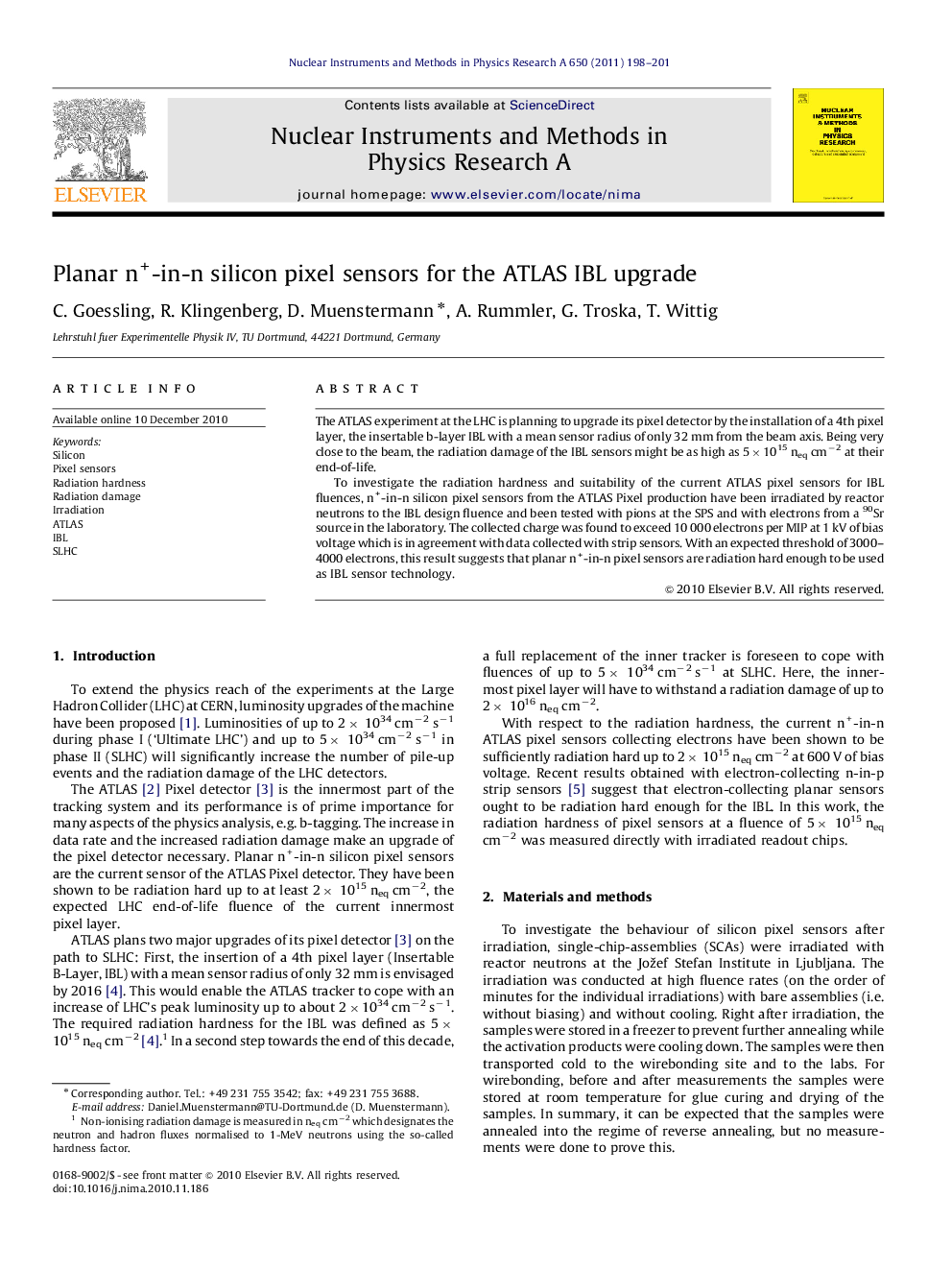| Article ID | Journal | Published Year | Pages | File Type |
|---|---|---|---|---|
| 1824749 | Nuclear Instruments and Methods in Physics Research Section A: Accelerators, Spectrometers, Detectors and Associated Equipment | 2011 | 4 Pages |
The ATLAS experiment at the LHC is planning to upgrade its pixel detector by the installation of a 4th pixel layer, the insertable b-layer IBL with a mean sensor radius of only 32 mm from the beam axis. Being very close to the beam, the radiation damage of the IBL sensors might be as high as 5×1015 neq cm−2 at their end-of-life.To investigate the radiation hardness and suitability of the current ATLAS pixel sensors for IBL fluences, n+-in-n silicon pixel sensors from the ATLAS Pixel production have been irradiated by reactor neutrons to the IBL design fluence and been tested with pions at the SPS and with electrons from a 90Sr source in the laboratory. The collected charge was found to exceed 10 000 electrons per MIP at 1 kV of bias voltage which is in agreement with data collected with strip sensors. With an expected threshold of 3000–4000 electrons, this result suggests that planar n+-in-n pixel sensors are radiation hard enough to be used as IBL sensor technology.
